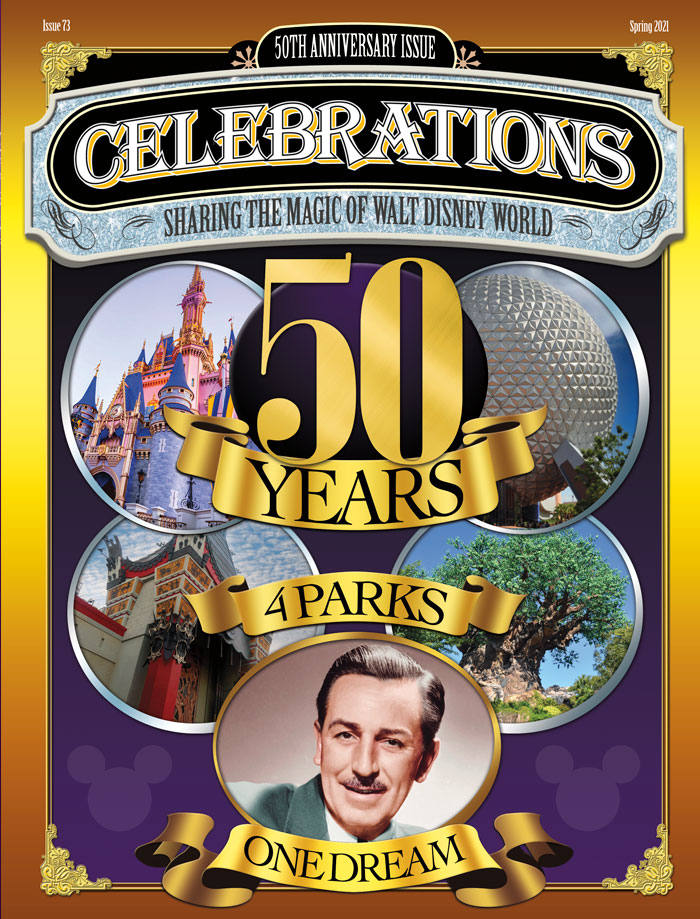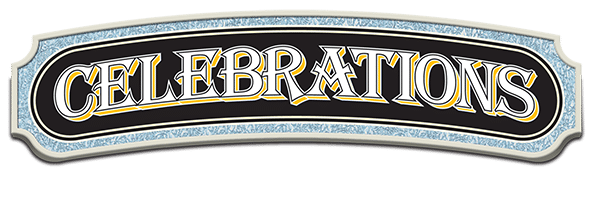10 Fun Factoids About Adventureland

1) A True-Life Adventureland?
For a brief moment, the land of exotic destinations and mysterious jungles was going to have a much longer name! When Disneyland was being constructed, Walt Disney hosted a show called “Disneyland” as part of an arrangement with ABC that provided much-needed funding for the park. The show proved to be the perfect vehicle for Walt to introduce the country to his new venture, and he took the opportunity to describe each land in detail. Many of the lands took their inspiration from other Disney shows at the time, including episodes of “Davy Crockett” for Frontierland, stories of space travel for Tomorrowland, and classic Disney cartoons for Fantasyland. Walt’s True-Life Adventure series of documentary films set the stage for Adventureland, and because of this the land had the short-lived working title True-Life Adventureland.
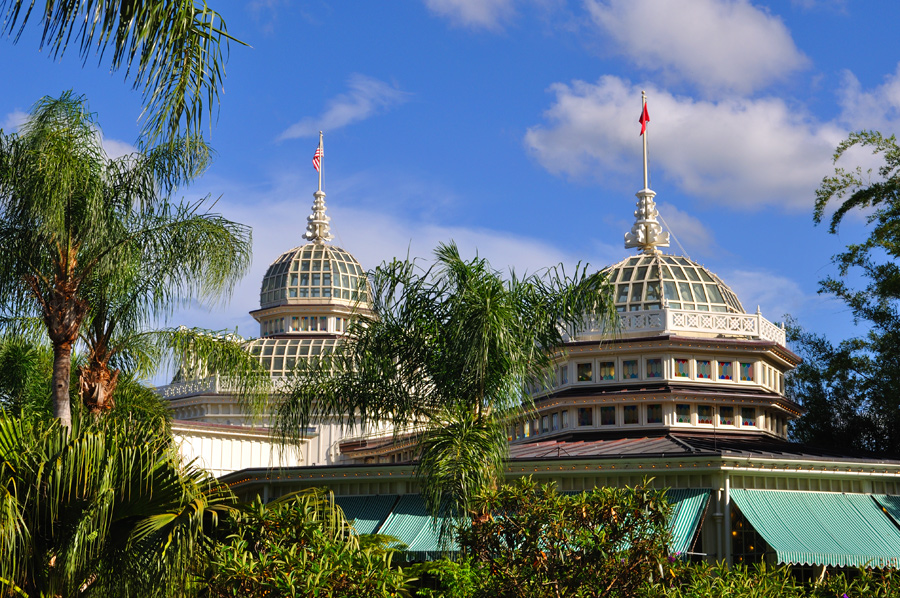
2) From the World of Nostalgia to the Land of Exotic Adventure
Great care was taken by Disney’s Imagineers to seamlessly transport Guests from land to another. Subtle transformations of architecture, landscaping, and background music not only set the stage for what’s to come, but do so in such a way that most Guests don’t realize what happened! One of the best examples of this transition strategy can be found as you enter Adventureland from Main Street, U.S.A. in the form of the Crystal Palace Restaurant. This unique building was designed to look right at home in both lands. The Victorian glass-domed ceilings and stained glass perfectly complement the scroll work and Victorian-era architecture of the shops on Main Street, U.S.A. But as you approach the bridge to Adventureland, you may notice that the ornate porch has given way to paned windows and striped green awnings. You’ll also notice that the well-manicured flowers are starting to transform into overgrown lush greenery. As Disney describes it, it’s as if you have left the quiet Victorian town of the middle of the 19th century and been whisked away to the late 1800s to a time of British colonization of Africa and Asia, where you might be seeing what could be the last remnants of civilization as you know it, as you prepare for a journey unlike any other, to far-off, exotic destinations, filled with mystery and adventure.

3) A Bridge Between
Speaking of transitions, perhaps the most important element of this piece of Imagineering trickery is the bridge itself. At one point, as seen in early concept art, the bridge was going to be covered, giving the entryway a much more ominous appearance. The idea of covering the bridge was soon dismissed, but you can still take note of how high the bridge is. This is a further indication that you are journeying to somewhere far away, so far away that a mere footbridge would never suffice. The sign welcoming you to Adventureland has changed several times over the years, as have the props that surround. But despite the minor alterations, the bridge continues to display a rustic, hand-made quality that hints of the many adventures that lie ahead. In addition to the bridge, other elements play important parts of the transition from Main Street to Adventureland. For example, the bright white and pastel colors of Main Street deepen to the richer and more tropical colors in Adventureland. These colors are meant to be evocative of places you might visit in travels far from home.

4) Where Are We?
While it is well-known that Main Street, U.S.A. took much of its inspiration from Walt Disney’s hometown of Marceline, Missouri, Adventureland was designed to evoke a variety of locations. As you wander through Adventureland, you’ll find yourself in the South Pacific tropical setting of the Enchanted Tiki Room and Aloha Isle, the exotic lands of the Middle East as you approach the Agrabah Bazaar, the mysterious and dangerous rivers of Africa and the Far East in the Jungle Cruise, and finally the Spanish-inspired Caribbean Plaza that’s home to the Pirates of the Caribbean. Actually though, that wasn’t the opening day plan. Can you imagine the Magic Kingdom without Pirates of the Caribbean? No? Well for a brief moment, Disney’s Imagineers could!
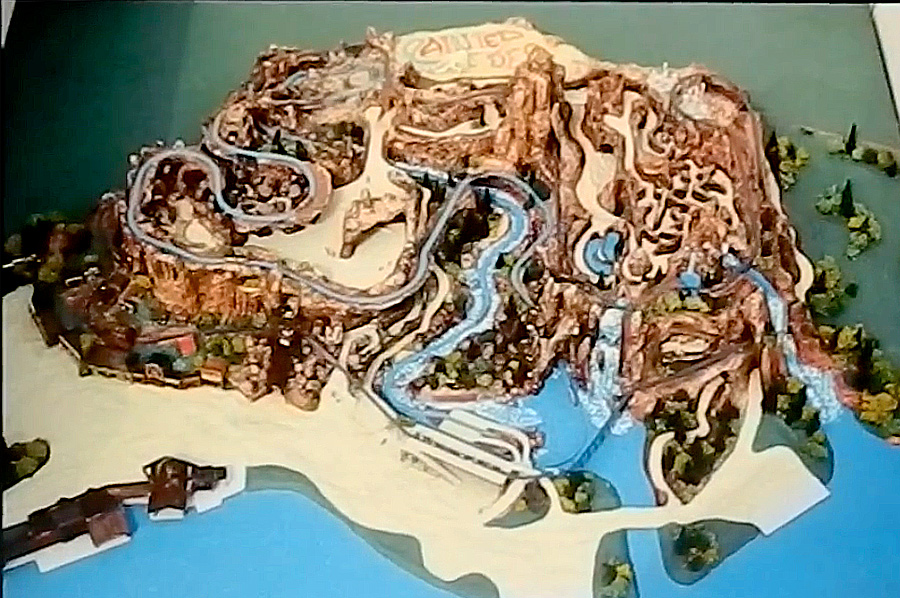
5) Where Are the Pirates?
Yes, you read that correctly. Not only was Pirates of the Caribbean not an opening day attraction, but the attraction was never intended to be included in the Magic Kingdom at all! As popular as Pirates proved to be in Anaheim, Disney assumed that Guests in Florida would have little interest in a pirate-themed attraction, seeing as tales of the real thing could be found nearby (meaning it wasn’t such a mysterious concept). Instead of Pirates of the Caribbean, there was going to be the Western River Expedition, an Audio-Animatronics–filled musical attraction would have been located near the current site of Big Thunder Mountain Railroad and the old Splash Mountain (concept art shown here). But it was long before Guests let their feelings known, they wanted the pirates to come to Florida! As a result, Disney postponed (permanently as it turned out) plans for Thunder Mesa and the Western River Expedition. In the spring of 1972, CEO Card Walker decided that the Pirates attraction would be added to the park, and he put Imagineers on a breakneck timetable to make it happen.

6) More Pirates Secrets
In the final treasure room scene with Jack Sparrow, look for the coat of arms hanging over the entryway. It reads Marco Daviso, a fitting tribute to legendary Imagineer Marc Davis, who lent the attraction all of its great sight gags. Speaking of Disney Legends, the Auctioneer is voiced by Paul Frees, who also plays the role of your Ghost Host at The Haunted Mansion.
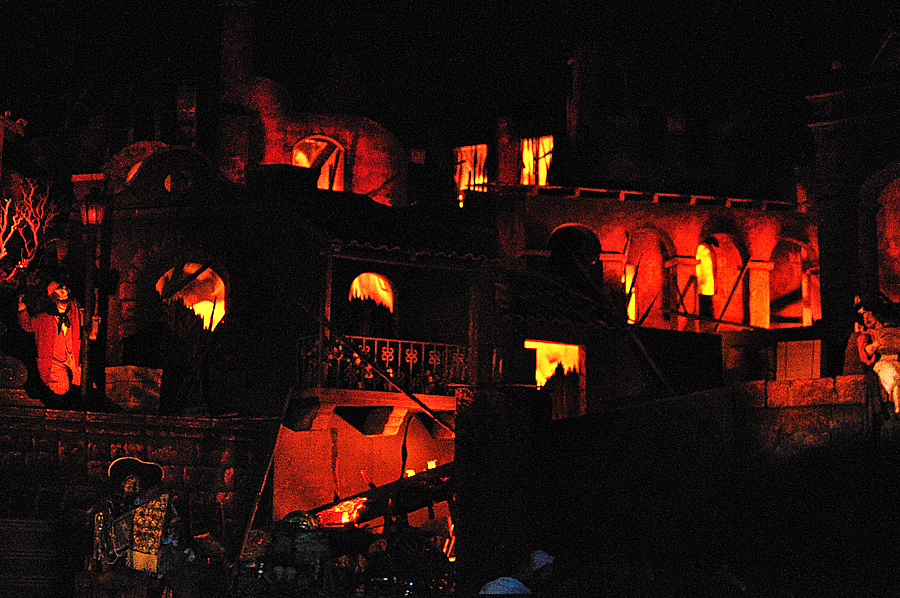
7) Where’s the Fire?
Pirates of the Caribbean features state-of-the-art Animatronics in the form of the recently addend Jack Sparrow figures, but this beloved attraction is also home to several classic (but still effective) effects. For example, the flickering flames in the town are nothing more than billowing pieces of cloth or Mylar illuminated by orange and yellow lights. Simple in concept, but effective enough that the firefighters in Anaheim insisted a cut-off switch be installed to instantly shut off the effect in case of a real emergency (lest the firefighters got fooled into dousing the flames of an imaginary fire!). The attraction also features the oldest continuously running example of the MAPO Flicker, a special effects dimmer mimicking the look of a candle or torch. It was developed by Roger Broggie, head of MAPO (which stands for Mary Poppins, the film that provided the original funding for the group), WDI’s Manufacturing & Production Organization.
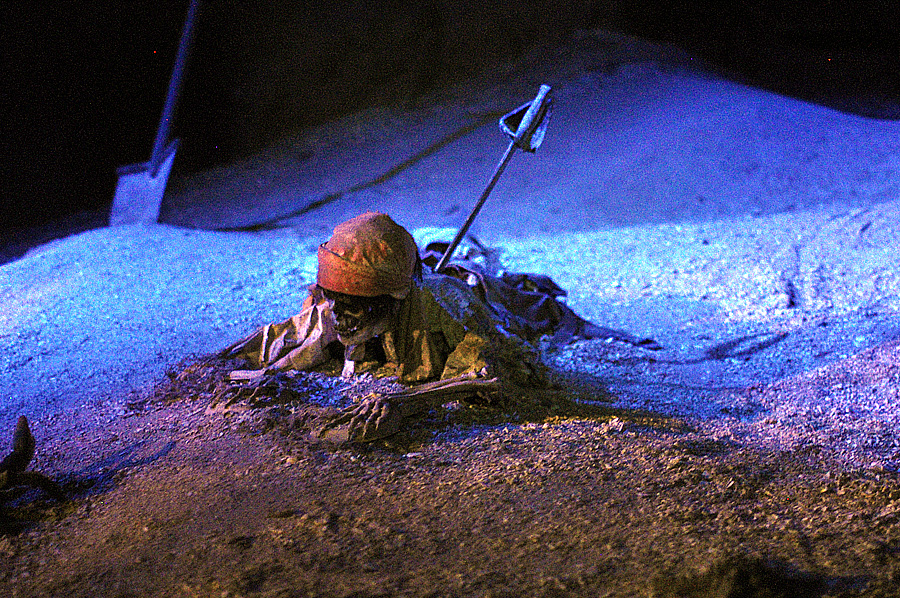
8) Dead Men Tell No Tales
The Disneyland version of Pirates of the Caribbean features two drops rather than the one that’s found in the Magic Kingdom version. But why is there a drop at all? Well, in addition to providing a moment of exhilarating excitement, the drops were a practical necessity. The railroad tracks in both parks wind their way through the attraction, and the drop is necessary in order to transport Guests to the show building which lies on the other side of the tracks. Incidentally, the also explains the reason for the inclined ramp you ascend when you disembark, it’s bringing you up to ground level. Another fun fact, the Florida version cannot go as deep because of the extremely high water table in the area (that’s why there’s only one drop in the Magic Kingdom version).

9) Raise the Flag
The Swiss flag that flies over the entrance of the Swiss Family Treehouse was the first flag of another nation to permanently fly over a Disney park attraction.

10) Shrinking Fountains and Spitting Tikis
When the Magic Carpets of Aladdin were added to Adventureland in 2001, the fountain that stood at the front of The Enchanted Tiki Room had to be reduced to make room for the new attraction. Imagineers could have started from scratch, but instead they decided to recreate the fountain as it was, just on a smaller scale. This was done by using the mold from the original building to fabricate the new backing panels behind the seat wall. This approach is part of Disney’s SQS, or Show Quality Standards initiative (which ensures that the parks maintain their original design intent as they age). Another example of this philosophy can be found in the tiki statues found in the heart of Adventureland. The tikis were originally just a piece of decor, but as the original, wooden figures deteriorated, Imagineers took the opportunity to rebuild them with fiberglass and to to introduce a new water element (watch out!) and some mysterious steam to add to the exotic landscape!
Enjoy the magic of Disney all year ’round with Celebrations Magazine!
